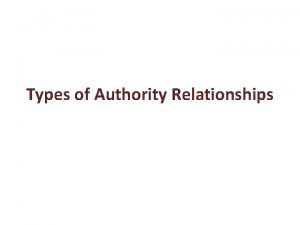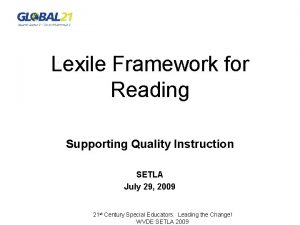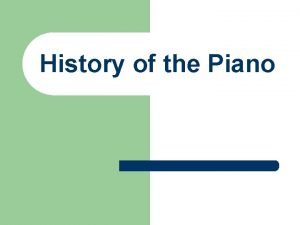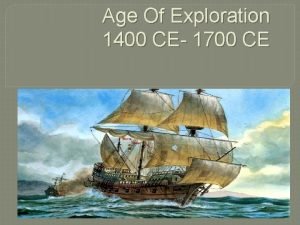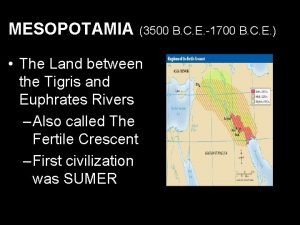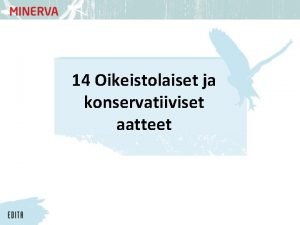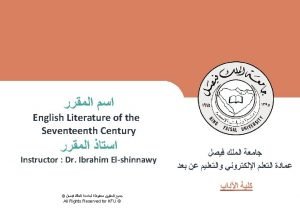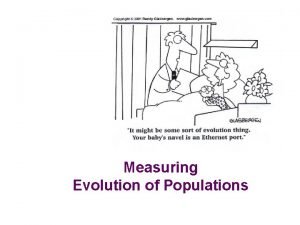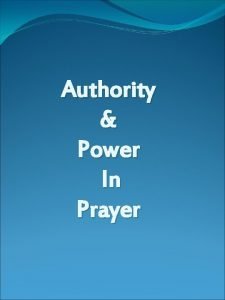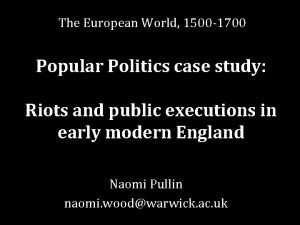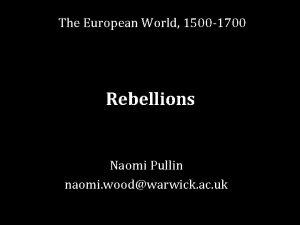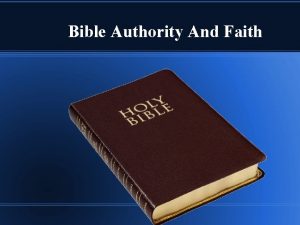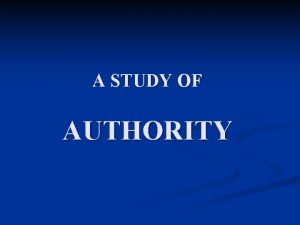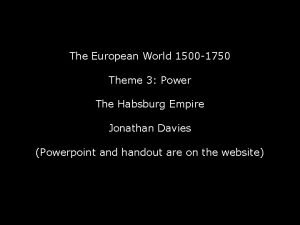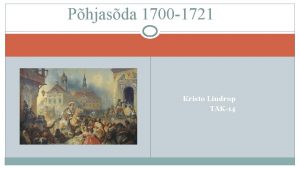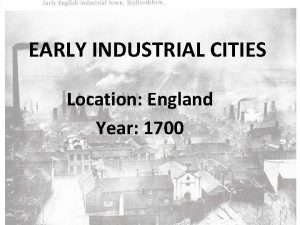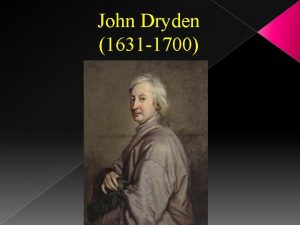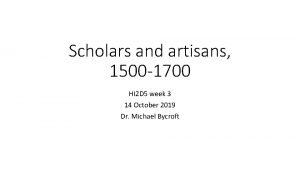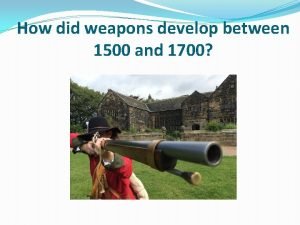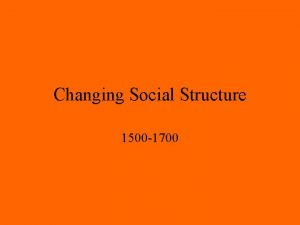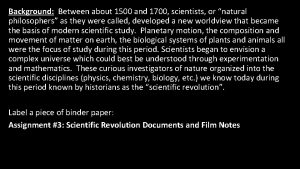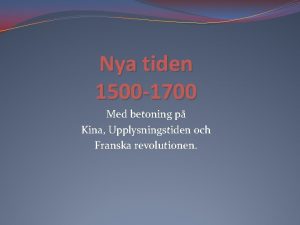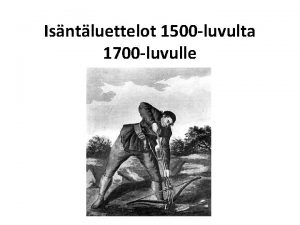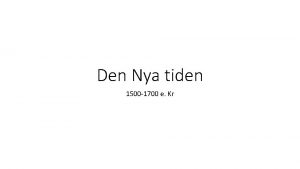The European World 1500 1700 Power and Authority

























- Slides: 25

The European World, 1500 -1700 Power and Authority Naomi Pullin naomi. wood@warwick. ac. uk

Focus of this lecture Explore regions of Europe governed by monarchs and empires in C 16 th and C 17 th 1. The political landscape - varieties of European polities: monarchies, composite monarchies and city states 2. The challenges to sovereignity 3. The expansion of royal power in Europe.

1. The political landscape of Europe

Europe in 1500 • • Europe c. 1450 comprised 1000+ independent polities Most powerful = hereditary dynastic monarchies, e. g. France, England, Scotland, Spain. Centred on institution of hereditary kingship. Have larger bureaucracies, bestfunded armies, greatest financial resources (through taxes)

Strong religious ideology underpins dynastic monarchies • Monarchs appointed by God to rule (‘Divine Right’) • Shakespeare - Richard II: ‘Not all the water in the rough rude sea. Can wash the balm from an anointed king; The breath of worldly men cannot depose. The deputy elected by the Lord. ’ • Cardinal Richelieu (advisor to Louis XIII of France): ‘kings are the living images of God’. Frontispiece to Bishop’s Bible (1569) from reign of Elizabeth I

The King’s Evil: Divinely appointed kings have power to heal scrofula through touch

‘Composite monarchies’ (J. Elliott) • Collection of states under one ruler, but each state retains their own local traditions and legal structures. • Rulers had to negotiate with local elites and with different laws and customs. • Larger domains = more composite 1. Spain • Forged with houses of Aragon and Castile (marriage of Isabella and Ferdinand in 1469) • C 16 th absorbs Catalonia, Valencia, Sicily, Naples, provinces of Netherlands (c. 1506) and Portugal (1580) • BUT regional political structures retained

‘Composite monarchies’ (J. Elliott) 2. France • No official language until 1539 • Even in 1515 only one royal official for every 4, 700 inhabitants. • 1620 – Béarn made part of France, but retained rights, privileges and customs.

Elective monarchies: Holy Roman Empire • • • Collection of c. 300 semiautonomous states; regional powers; and 66 free cities. Under control of ‘Holy Roman Emperor’ (e. g. Austrian House of Habsburg) Elected rather than hereditary monarch 10 Imperial Circles created by 1512 – for defence, taxation, peace-keeping etc. Parliament of each circle = Kreistag

City States: Italian City States, c. 1500

Italian city states • Greater civic participation, though still domination of elites/oligarchies • Venice governed by oligarchy of about 40 merchant noble families. • Republican/humanist ideology – claim to preserve political ethics of Republican Rome. • Identity of states heavily influenced by spread of humanism from = desire to return to ideology of ancient Rome: - right to resist monarchs and emperors from other parts of Europe who encroached on rights - writings of Niccolo Machiavelli and Francisco Guicciardini influence self-government in Netherlands

2. Challenges to monarchical rule

1. Representative institutions Local and regional assemblies found across Europe, e. g. : • Cortes of Aragon and Castile • Parlements of France > Estates General, Paris • Parliaments of England, Ireland Scotland Regional Assemblies: • Have limited law-making powers • Rights to bring grievances to princes, take charge of taxation, oversee legal cases. • Needed by kings to raise taxes and armies • In many countries (e. g. France, Spain, Scotland) organised by ‘estates’ – bring together nobility, church and commons.

Estates-General: France • Local Parlements have some power to veto royal decisions • During national crisis representatives could meet together in Paris as the ‘Estates. General’ to discuss and debate policies

2. The Nobility Political order in 1500 = feudal • Feudal state composed of overlapping authorities, rather than single sovereign • Power of ruler bound up with regional aristocrats (not king) who have right to wage war, tax subjects, administer and enforce law • Nobility from ancient warrior class – dominate government at all levels.

Nobility most significant check on growth of royal power in Europe • England – Sheriffs and magistrates drawn from landed elites • France – baillis and senechaux (local governors) recruited from provincial nobility • Dependence on nobles determined by size of territory

3. Expansion of monarchical power in early modern Europe

(1) Territorial conquest • Competition between monarchs for territory – one of greatest sources of European conflict. • Driven by better funded imperial armies and better technology Spain: • Conquer Valencia, Catalonia, the Netherlands and Portugal in C 16 th, and Mexico and Peru Italian Wars 1494 -1559: • City states fall in face of French, Austrian and Spanish expansion • By 1559 – only Venice and San Marino retain independence

(2) Domestic centralisation: 1. Over the Church Meaning of concept ‘empire’ / ‘imperium’ = total dominion, absolute sovereignty, not territorial conquests. • Protestant Reformation gives secular rulers ability to limit power of bishops and Popes over territories. • Thomas Cromwell (1533): ‘this realme of England is an Empire. . . governed by one supreme head and king having the dignity and royal estate of the imperial crown of the same, unto whom a body politic. . . be bounden and Thomas Cromwell (1485 -1540): chief owe to bear next to God a advisor to Henry VIII 1532 -40 natural and humble obedience’’ •

(2) Domestic centralisation: 1. Over the Church In Catholic as much as Protestant states: • 1516 Concordat of Bologna – papal bull giving kings of France given right to nominate appointments of all bishops • 1555 Holy Roman Empire states - adopt policy of ‘cuius region, eius religio’ – of him the region, of him the religion.

2. Expansion of royal court • • • Court becomes a major centre of government Before 1500 courts = highly mobile and not fixed 1500 -1750 = became permanent seats of gov. administration Escorial Palace, Madrid • Spanish Court: 1561 - permanently established in Madrid becoming lynchpin of central government. • Emergence of new class of royal official and bureaucracy • During Henry VIII’s reign in England - Thomas More and Thomas Cromwell

3. Legal and Political uniformity • Expansion of royal control over regions by eroding independent rights: challenge representative institutions and nobility • Europe 1400 had 1, 000 independent polities; by 1700 less than 350. England under Henry VIII, 1536 -41: • Wales incorporated into full union with England; • Ireland brought under English control - ‘surrender and regrant’ forced landowners to submit control of lands to Crown

3. Legal and Political uniformity Spain under Philip IV and Count Olivares, 1620 s -40 s: • ‘one king, one law and one coinage’ across Spanish domains; • 1632 - control of cities taken from Castilian Cortes • New military policy called ‘Union of Arms’ Centralisation in France under Cardinal Richelieu from 1610 s: • Dilute power of nobility with royal councils and provincial officials called Intendants • Intendants can raise troops, administer justice, raise and collect taxes 1515 1 royal official : 4, 700 inhabitants; 1665 1 royal official : 380 inhabitants

Tensions between official institutions and state-building Shakespeare, Henry IV, Part 2: ‘Uneasy lies the head that wears the crown’

Conclusions? • Huge variety in types of early modern state: hereditary monarchies, city states, republics, composite monarchies, elected monarchies • Tension between state-building aspirations of monarchs, and existing structures, e. g. parliaments, regional assemblies, nobility. • How central are the nobility and court to the ‘making’ of the EM states? • Transition from feudal to sovereign state = complex and contingent process • Changes affected by other developments – religious and technological change, and intellectual developments (e. g. humanist thought)
 What is line authority?
What is line authority? 1700/23
1700/23 Lexile framework for reading
Lexile framework for reading Nfpa 1700
Nfpa 1700 Piano 1700
Piano 1700 Christopher columbus significance
Christopher columbus significance 3500 + 1700
3500 + 1700 Eta 1700
Eta 1700 Rivoluzione agricola 1700
Rivoluzione agricola 1700 1700 luvun aatesuunta
1700 luvun aatesuunta Rotazione quadriennale 1700
Rotazione quadriennale 1700 Restoration period 1660 to 1700
Restoration period 1660 to 1700 1700/1600
1700/1600 Mechanisms of evolution
Mechanisms of evolution Mobility express
Mobility express 1700 bce
1700 bce Triangle of power
Triangle of power Difference between authority and power
Difference between authority and power Exousia power
Exousia power Superior authority
Superior authority America africa and europe before 1500
America africa and europe before 1500 The world of european culture
The world of european culture Hát kết hợp bộ gõ cơ thể
Hát kết hợp bộ gõ cơ thể Ng-html
Ng-html Bổ thể
Bổ thể Tỉ lệ cơ thể trẻ em
Tỉ lệ cơ thể trẻ em
